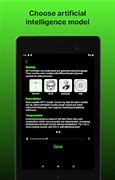**Can You Spot a Robot Writer? The GPT Detection Challenge**
(Can Chat Gpt Be Detected)
Imagine this. You’re reading an email from a coworker. The tone feels a little too polished. The sentences flow a bit too smoothly. A tiny voice in your head whispers: *Was this written by a human?* With tools like ChatGPT now everywhere, the line between human and machine writing is blurring. But can people—or software—actually detect when a robot’s behind the words? Let’s dig in.
First, how do detection tools even work? Most rely on patterns. AI-generated text often follows predictable rhythms. It might avoid slang, repeat phrases, or lean on certain structures. Tools like GPTZero scan for these clues. They check things like “perplexity” (how random the text feels) and “burstiness” (variation in sentence length). Human writing tends to be messier, with more surprises. Machines? Not so much.
But here’s the catch. AI is learning fast. Older versions of ChatGPT were easier to spot. Their responses were stiff, overly formal, or oddly vague. The latest models, though? They mimic casual humor, throw in typos on purpose, and even ramble like a real person. This makes detection a moving target. What worked yesterday might fail tomorrow.
Take schools, for example. Teachers once relied on tools like Turnitin to flag essays written by AI. Now, students can tweak ChatGPT’s output just enough to slip past detectors. Swap a few words. Break up long sentences. Suddenly, the A+ essay about Shakespeare looks human—even if a robot drafted it. Some students go further, using AI to *rewrite* AI text, creating a loop that baffles scanners.
Companies face similar headaches. Customer service chatbots pretend to be “Jenny from support.” Marketing teams use AI to draft ads that feel personal. But if customers sense a machine behind the curtain, trust crumbles. Businesses now walk a tightrope—using AI to save time while keeping its presence invisible.
What about plain old human intuition? Sometimes, yes. A tech-savvy reader might notice quirks. Maybe the answer dodges specifics. Maybe metaphors feel off—like a robot trying too hard to sound poetic. Other times, though, even experts get fooled. Studies show people correctly guess AI writing only slightly better than random chance.
The stakes are high. Fake reviews, spam emails, and social media bots all thrive on undetectable AI. Scammers use it to clone voices for phishing calls. News outlets worry about AI-generated articles spreading misinformation. Detecting bots isn’t just about curiosity—it’s a digital survival skill.
So, is there a foolproof way to spot AI text? Right now, no. Detection tools improve, but so do the models they’re chasing. It’s an arms race. Some say watermarking AI content is the answer. Others push for laws requiring transparency. Neither solution is perfect.
In the end, the real question isn’t just *can* GPT be detected. It’s *how much it matters* if it can’t. As AI blends into daily life, the focus might shift from exposure to accountability. Who’s responsible if a chatbot gives bad advice? How do we credit AI-assisted work? The answers won’t come from detectors—they’ll come from how we adapt.
(Can Chat Gpt Be Detected)
One thing’s clear. The more AI evolves, the more human creativity must rise to meet it. After all, a robot can mimic style, but it can’t replicate the chaos, passion, and weirdness that make writing truly alive. Maybe that’s the ultimate detection tool we’ve had all along.
Inquiry us
if you want to want to know more, please feel free to contact us. (nanotrun@yahoo.com)




